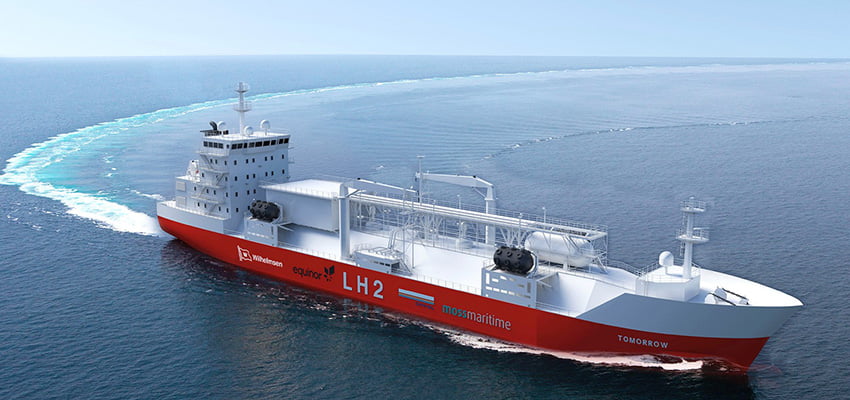HYDROGEN as a fuel has become a hot topic, with Australia looking to develop hydrogen production and export capacity, and it has been marked as a possible maritime fuel.
Four companies have banded together to develop plans for a liquefied hydrogen bunker vessel. Moss Maritime in co-operation with Equinor, Wilhelmsen and DNV-GL launched the project – sponsored by Innovation Norway – to clarify challenges and find solutions for the storage and handling of liquefied hydrogen.
The liquid hydrogen bunker vessel is designed for a capacity of 9000 cubic metres, with a cargo containment system designed to maximise insulation performance and meet stringent safety requirements.
In addition to bunkering operations, the vessel is also designed for open sea transport.
Wilhelmsen Ship Management vice-president Europe and Americas Håkon Lenz said hydrogen is a possible fuel for the future.
“The commercial feasibility of such a vessel is depending on the overall hydrogen market development. Once market signals show that there is a need for big scale liquefied hydrogen, we and our partners are ready to take this design to the next level,” he said.
“By initiating and participating in this project we prepare ourselves for meeting the demand of our customers in the years to come, and Wilhelmsen will always seek opportunities in new technology to enable sustainable global trade.”
Moss Maritime vice-president Tor Skogan said the company is able to build on is expertise in building LNG carriers for a hydrogen carrier.
“Moss Maritime has utilised its long-standing experience from design of Moss LNG carriers in the development of the LH2 [liquefied hydrogen] bunker vessel, where liquefied hydrogen at a temperature of -253 degrees Celsius will offer advantages over pressurised hydrogen gas in relation to transportation costs,” he said.
“We are ready to support the ship industry in implementing solutions for liquefied hydrogen for future projects.”
Equinor vice-president for low carbon solutions Steinar Eikaas said hydrogen could be an attractive energy source for sectors that are difficult to decarbonise and are currently outside the scope of other renewable technologies such as batteries.
“Long haul maritime shipping is one of these and an important milestone has been passed by introducing a logistical solution for transport of liquefied hydrogen by the sea,” he said.
Here in Australia, hydrogen is on the table as well. In late January, the Labor Party announced a 1.14bn “hydrogen strategy”.
Also, across the ditch, Ports of Auckland recently committed to building a hydrogen production and refuelling facility at the port.

